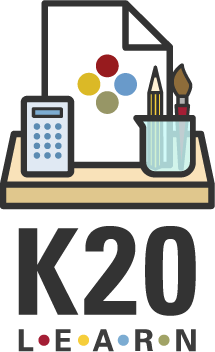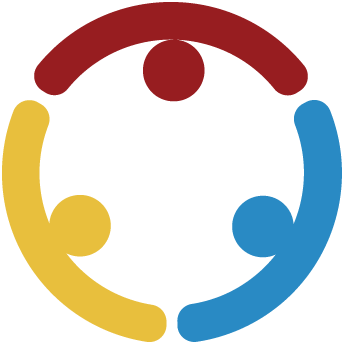Summary
AI can help students turn everyday experiences into professional, skill-focused resume statements by generating polished language based on clear, specific prompts. Through guided use, students learn to evaluate and refine AI-generated content to ensure it that accurately represents their achievements and aligns with professional standards. This empowers students to use AI responsibly as a tool for building confidence and improving their career readiness.
Essential Question
How can AI help turn work experiences into powerful resume statements that showcase skills?
Learning Objectives
Students will identify how AI can be used to enhance resume language by transforming basic job descriptions into professional statements.
Students will demonstrate how to write effective AI prompts to generate improved resume content based on their own experiences.
Students will evaluate the quality and appropriateness of AI-generated resume content, making revisions to ensure clarity, professionalism, and accuracy.
Snapshot
Engage:
Students recall and describe their past work or volunteer experiences to begin thinking about how to present them professionally on a resume.
Explore:
Students experiment with AI tools by inputting basic job experiences and modify prompts to observe how different inputs affect the output.
Explain:
Students analyze how AI generates responses and differentiate between effective and ineffective prompts while discussing ethical considerations.
Extend:
Students construct professional resume bullet points by refining their own work experience with the help of AI and test various prompt strategies.
Evaluate:
Students critique AI-generated resume content and assess the strengths, limitations, and ethical implications of using AI in resume writing.
Materials List
Activity Slides (attached)
Experience to Expertise handout (attached; one per student)
Getting Started with AI handout (attached; one per student)
Pen/pencil
Paper
Highlighter
Engage
15 Minute(s)
Use the attached Activity Slides to facilitate this event. Show the title on slide 2 then transition through slides 3-4 and review the essential question and learning objectives in as much detail as needed.
Display slide 5 and explain how AI tools can help students craft polished, professional resumes with remarkable efficiency. But as students integrate these tools into our workflow, it’s important to note the following quote:
“No matter how good AI gets, humans still want role models, and we want to be inspired by human greatness. This is why we cheer for Olympic swimmers, even though speed boats go faster.”
This quote serves as a powerful reminder that while AI can enhance our capabilities, it cannot replace the uniquely human qualities that employers value most: authenticity, ambition, and creativity. Just as we admire Olympic athletes not for their raw speed but for their dedication and discipline, hiring managers are drawn to resumes that reflect genuine human effort and potential.
Explain to students that AI is a tool, not a toolbox. It can help them refine their language, highlight their achievements, and tailor their resume to specific roles.
Move to slide 6 and use the Quick Write instructional strategy to allow students time to brainstorm their own work experiences. Have students get out paper or provide it yourself, then start the 3-minute K20 Timer to write. Consider asking prompting questions if you see students struggle like “Have you ever had a job, volunteered, or helped someone with a task? How would you describe that experience on a resume?” After the timer goes off, ask for volunteers to share what they wrote.
Explore
20 Minute(s)
After students are done sharing, transition through slides 7-8 and read the two example resume entries. Ask students: “What do you like about each resume and why?” Introduce the idea that AI can help them describe their experiences more thoroughly and professionally.
Display slide 9 and have students either work on the next activity individually or in small groups. Pass out the Experience to Expertise handout to every student then explain the instructions, how to access AI websites (reference list on handout), and sample work experiences to enter into the chatbot. Allow students time to work.
After students have had time to work, ask students to share their experience with the activity using the I Notice, I Wonder strategy.
Explain
10 Minute(s)
Move to slide 10 and pass out the Getting Started with AI handout and a highlighter to every student. Explain the Why-Lighting strategy and have students highlight important pieces of information from the handout while reading. Encourage students to take notes in the margins of the page explaining why they marked a section. Allow students time to work. Then, in a small or large group discussion, have students discuss what they highlighted and why it stood out to them. Use this time to clear up any misconceptions about AI.
Extend
15 Minute(s)
Display slide 11 and explain that they will now revisit their Quick Write and pick one real work experience they have from a job, volunteer opportunity, club, etc. and write a basic sentence about it. When they have completed the sentence, have them ask AI to expand upon it and turn it into a professional bullet-pointed resume. Remind students to enter different prompts to see how the AI responds. Encourage students to use the “Write with Context” graphic on their Getting Started with AI handout when creating their prompts. Allow students time to work.
Move to slide 12 and introduce students to the Critique the Bot strategy. Ask students to critique the bot and reflect on their AI bot responses using the following reflection questions individually or in small groups:
Based on what you know about how a resume should be formatted, how did the bot do?
What did the Bot miss?
Did it make each bullet action-oriented?
What details do you need to still add?
Did the bot give too much or too little information?
After they have had time to work on their outputs and discuss the reflection questions, have a couple of students share what they discussed.
Transition into the dangers associated with using AI by asking students “What are the issues with using AI?” After a brief discussion, move to slide 13 and discuss the pitfalls that students should avoid when inputting information into any AI platform. Students should never enter content such as personal contact information, health-related information, or original creative work. Remind students that they must always review outputs and make edits to fit their needs. They should never simply copy and paste outputs from AI. Students should always remember that AI is meant to be a tool and not the toolbox.
Evaluate
10 Minute(s)
Move to slide 14 and ask students to think about the deeper implications of AI use during the resume-building process. Use the following guiding question for a group discussion:
How can AI help improve resumes?
Research Rationale
Resume workshops are crucial for helping students develop effective, professional resumes that help to meet industry standards (Tillotson & Osborn, 2012). These workshops, typically conducted by Career Services or other post-secondary institution employees and supported by academic mentors, guide students through the challenging process of translating limited college-level experience into a compelling document (Anderson-Rowland & Culley, 2007). The primary focus is helping students understand how to showcase their skills from various aspects of their life, including academic projects, extracurricular activities, and work experiences, using strong action verbs and keywords (Tillotson & Osborn, 2012). By providing resources, critiques, and industry insights, these workshops help students create resumes that effectively market their potential to future employers, bridging the gap between academic achievements and professional expectations (Anderson-Rowland & Culley, 2007).
Resources
Anderson-Rowland, M., & Culley, P. (2007, June). Helping lower division engineering students develop a good resume. In 2007 Annual Conference & Exposition (pp. 12-801).
K20 Center. (2021, September 21). 3 Minute Timer. YouTube. https://www.youtube.com/watch?v=iISP02KPau0&ab_channel=K20Center
K20 Center. (n.d.). Critique the bot. Strategies. https://learn.k20center.ou.edu/strategy/3491
K20 Center. (n.d.). I notice, I wonder. Strategies. https://learn.k20center.ou.edu/strategy/180
K20 Center. (n.d.). Quick write. Strategies. https://learn.k20center.ou.edu/strategy/1127
K20 Center. (n.d.). Why-lighting. Strategies. https://learn.k20center.ou.edu/strategy/128
Tillotson, K. and Osborn, D. (2012). Effect of a résumé-writing workshop on résumé-writing skills. Journal of Employment Counseling, 49: 110-117. https://onlinelibrary.wiley.com/doi/abs/10.1002/j.2161-1920.2012.00011.x?msockid=123594c4ddd962f133aa8107dc786312


